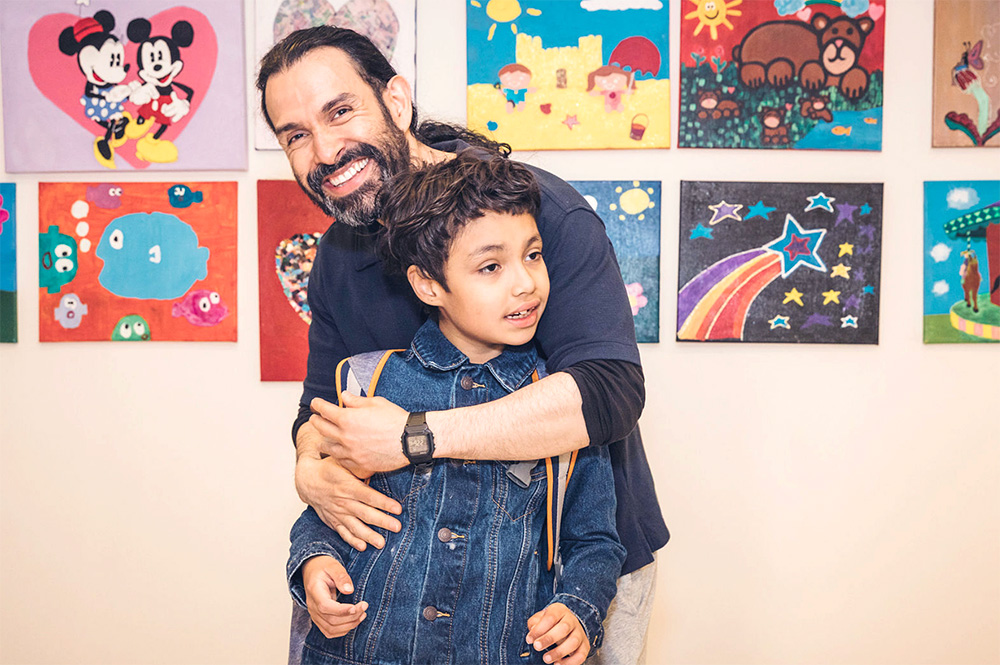🌟 Easing the Transition: From Summer to Back-to-School

As the last weeks of summer approach, many families—especially those with neurodiverse children—start thinking (and feeling) the shift ahead. Summer’s slower pace, flexible routines, and open-ended days give our kids time to recharge. But August brings change. And change, even when it’s positive, can be hard.
The good news? With small, intentional steps, you can help your child feel more confident, calm, and prepared when school starts again.
We chatted with The Help Group’s school leaders and teachers and created this gentle, step-by-step guide to make the back-to-school transition smoother for the whole family.
1. Start Adjusting Routines Gradually
A few weeks before school begins, begin gently moving back toward school-day routines. This can include:
- Earlier bedtimes and wake-up times
Start shifting bedtime and wake-up by 15 minutes every few days. This helps reset sleep patterns without a sudden jolt. - Practice morning routines
Go through the motions—brushing teeth, getting dressed, breakfast—so those steps feel familiar again. - Preview the school day
Talk through what mornings might look like once school starts: “We’ll wake up at 6:30, eat breakfast, and be ready for the bus to arrive at 7:30.”
2. Use Visuals and Schedules
Many children feel calmer when they can see what’s coming. Visual tools help many kids feel more secure. Top suggestions from The Help Group staff include:
- A visual calendar that counts down the days until school starts.
- A daily routine chart with pictures or words that show morning and evening steps.
- A weekly plan with activities written out so your child knows what to expect.
3. Reconnect with Learning, Gently
You don’t need to recreate school at home. Just weave small amounts of learning into your days:
- Read together
- Play games that involve math or language
- Watch educational videos or explore your child’s interests in creative ways
If your child attended a summer program, ask what they worked on and look for ways to keep it going.
4. Talk About School (in a Low-Stress Way)
Help your child think about the new school year with openness and curiosity. Shayne Horan, Vice President of Schools offers these suggestions:
- “What do you think you’ll learn this year?”
- “Is there anything you’re excited about?”
- “Anything you’re nervous about? That’s okay—we can talk about it.”
You can also read books about going back to school, role-play common situations (like meeting a new teacher), or walk by the school to get reacquainted.
5. Practice Coping Tools
If your child uses tools to stay calm—like a sensory toy, a breathing technique, or a quiet space—start using them regularly in August. You can:
-
- Put together a “calm kit” for their backpack
- Practice “pause and breathe” moments during small changes or surprises
- Reinforce that it’s okay to ask for help
The goal is to remind your child that even if something feels hard, they have ways to handle it.
6. Plan for Connection
Going back to school isn’t just about academics—it’s also about people. You can help your child feel more socially ready by:
- Scheduling a playdate or short meetup with a classmate
- Visiting the school campus, if possible
- Practicing greetings and conversation starters
- Talking about who they can go to for help (a teacher, a counselor, a friend)
7. Make Room for Feelings
Transitions can bring up a lot of emotions—for your child, and for you. One day might feel exciting, the next overwhelming. That’s to be expected, reassures Dr. Laurie Stephens, Sr. Director of Autism & Clinical Services. “You don’t need to fix every feeling. Just validate the feeling, listen to how your child feels, stay calm, and remind your child: “You’re feelings are valid, but you’re not alone. I’m here. We’ll do this together.”
8. Ease into August
The week before school starts, keep things simple. Limit big activities. Stick to a steady routine. Offer plenty of breaks and downtime.
You might even create a special “Back to School Weekend” with a fun breakfast, a walk to school, or a little surprise to mark the moment.
Every child is different—and so is every transition. What matters most is starting small, staying consistent, and offering reassurance along the way.
“Remember,” says Pam Clark, Vice President of School Administration, “your child doesn’t need to be perfectly ready for Day 1. They just need to know they’re supported, seen, and not alone. With love, structure, and a few simple steps, you’re giving them a strong foundation to start the school year with confidence and care.”
To learn more about The Help Group Schools & Programs visit: Our Admissions page
